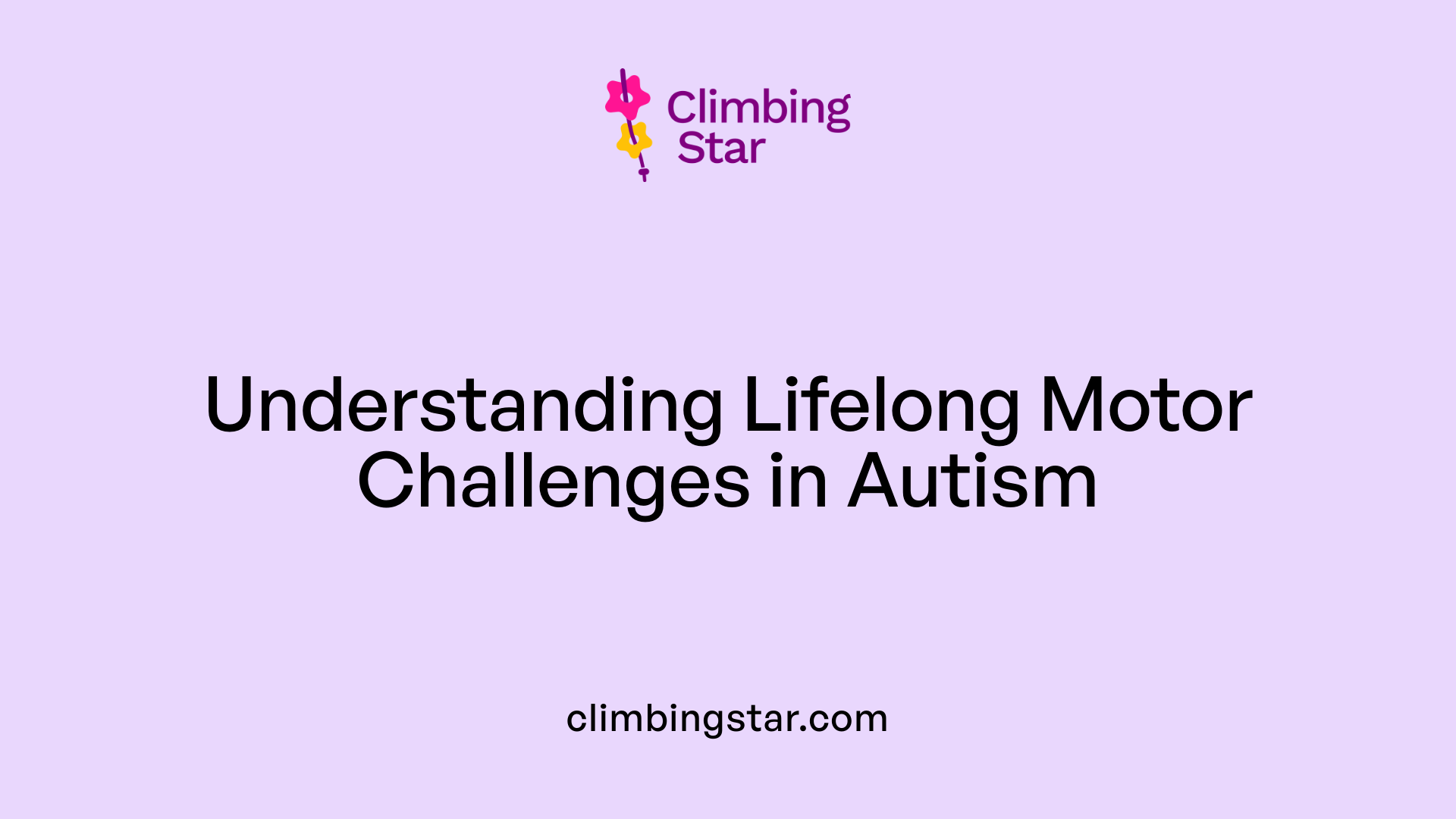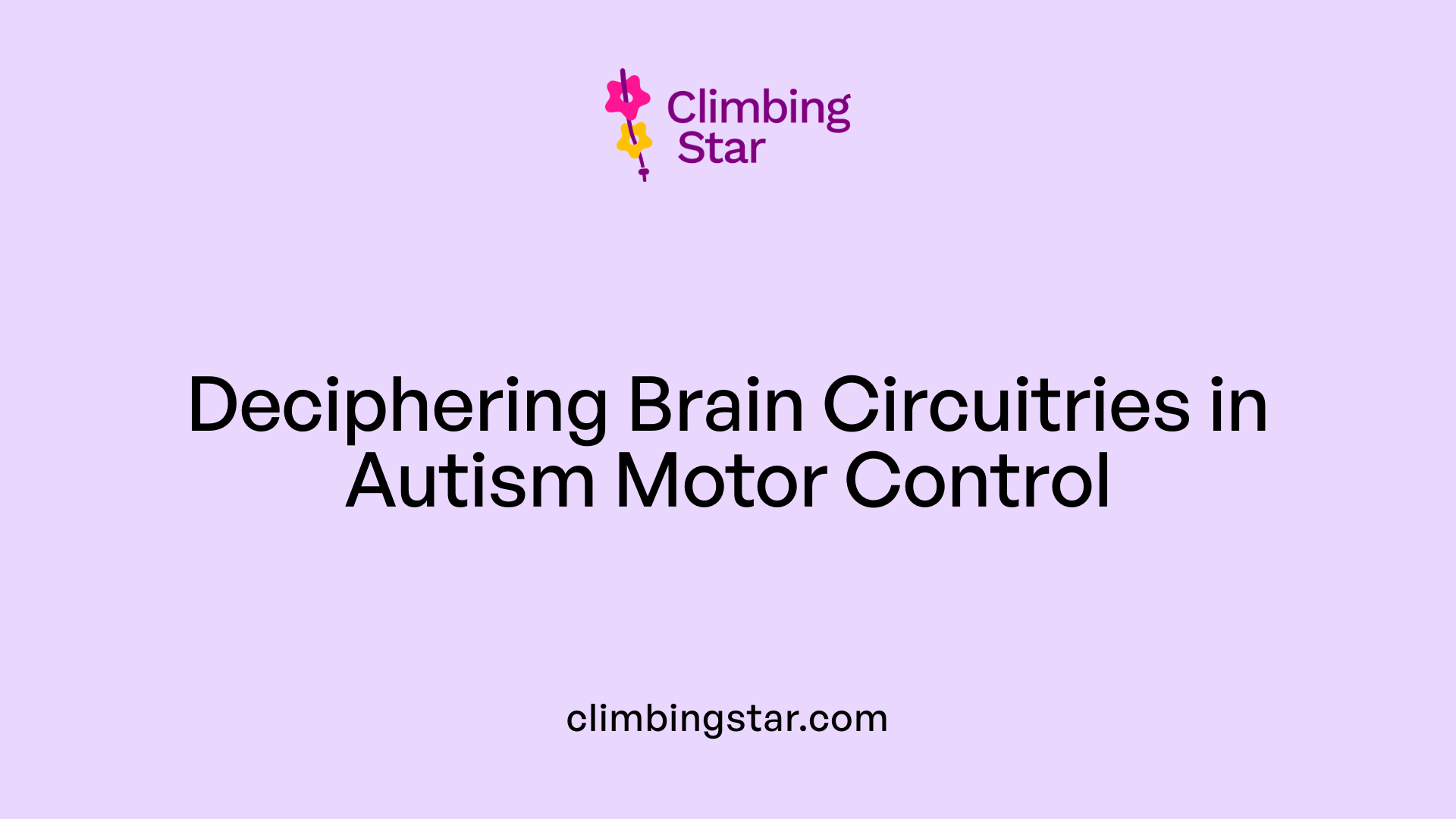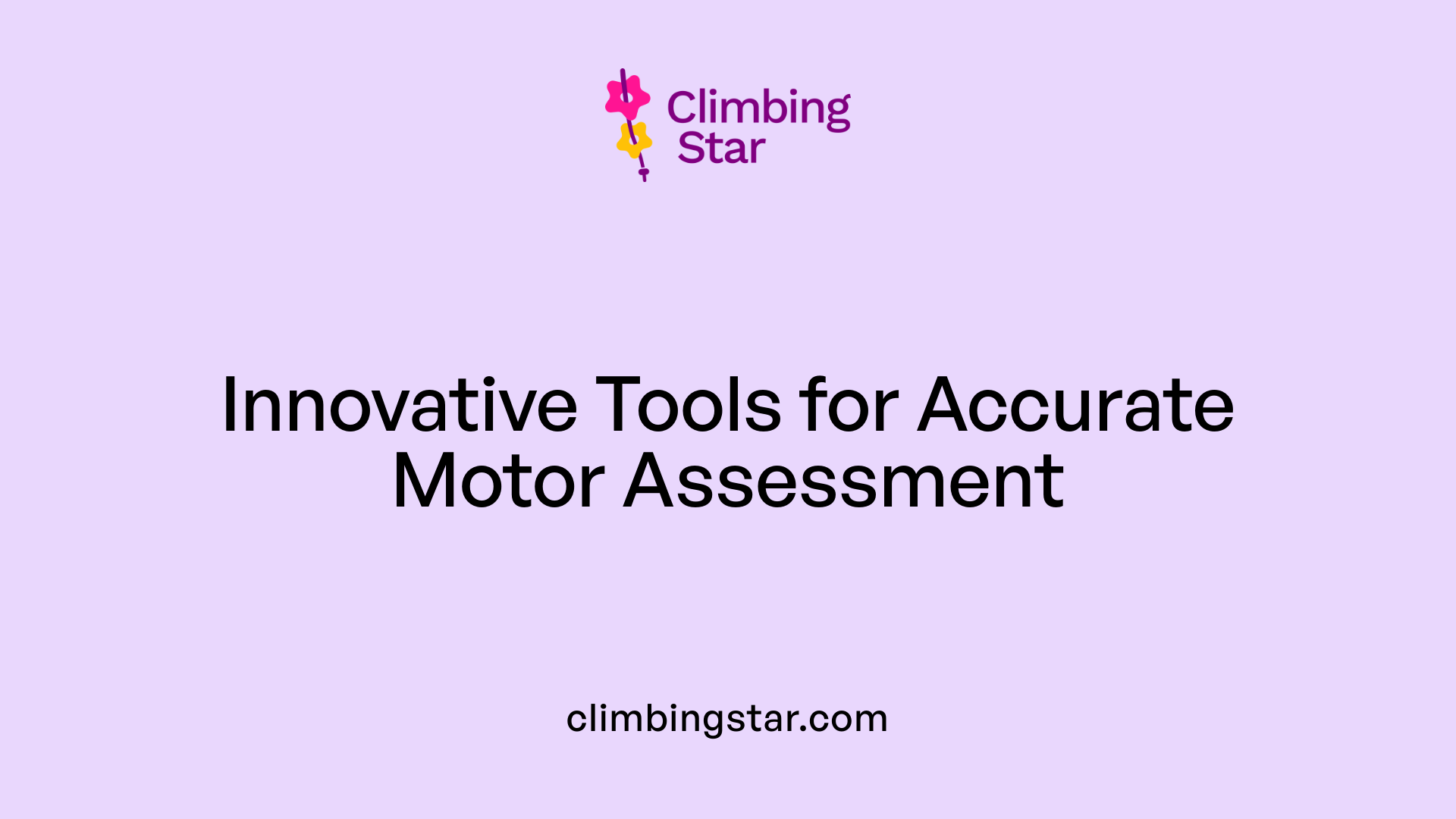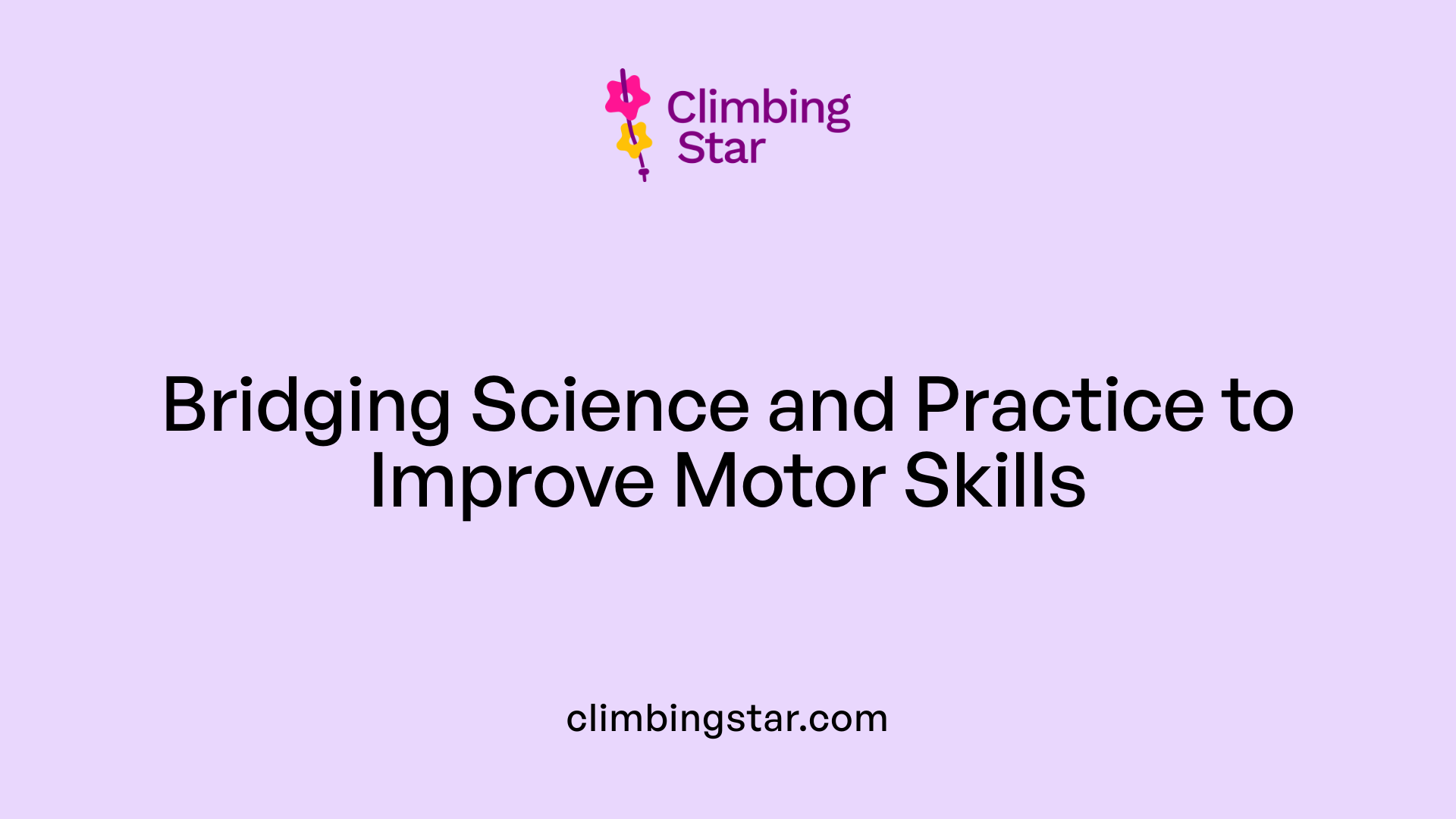Exploring Motor Challenges in Autism Spectrum Disorder
Autism spectrum disorder (ASD) encompasses a broad range of neurodevelopmental differences, among which motor skills often receive less attention despite their profound impact on daily functioning and development. Recognizing and understanding motor difficulties in individuals with autism is crucial for early diagnosis, targeted intervention, and improving overall quality of life. This article examines how autism influences motor development, the typical challenges faced by autistic individuals, assessment methods, underlying neurophysiological mechanisms, and promising interventions.
Prevalence and Nature of Motor Problems in Autism

How does autism affect motor skills and development?
Autism Spectrum Disorder (ASD) is frequently accompanied by a wide range of motor challenges, with studies indicating that between 50% and 95% of individuals with ASD experience some form of motor difficulties. These problems can include delays in reaching early motor milestones such as sitting, standing, and walking, often evident from infancy.
Children with autism may exhibit problems with both fine and gross motor skills. Gross motor issues involve large movements like walking, running, jumping, and activities that promote balance and coordination. Fine motor difficulties include tasks such as grasping objects, handwriting, and manipulating small items, which require precise hand-eye coordination.
Additional motor issues include problems with static and dynamic balance, gait abnormalities, and motor planning or praxis difficulties—such as imitating gestures or sequencing movements. These impairments can lead to uncoordinated gait, weakness, and abnormal movement patterns, affecting mobility and physical participation.
Motor impairments in autism often persist into adulthood, further impacting daily life. They can reduce participation in physical activities, hinder self-care routines like dressing or feeding, and increase the risk of falls and injuries. Beyond physical challenges, these motor difficulties also influence social engagement and exploration, which are vital for social development.
The underlying causes of motor problems in autism are complex. Differences in brain connectivity, atypical motor control, low muscle tone (hypotonia), and sensory processing challenges contribute to these difficulties. For example, decreased neural synchrony between visual and motor regions or altered activity in motor planning circuits has been observed. Additionally, genetic factors and syndromic forms of autism are often associated with characteristic motor features.
Early recognition and assessment of motor problems are crucial. Tools such as caregiver questionnaires and observational tests can help identify motor delays early on. Interventions including physical and occupational therapies can significantly improve motor skills, supporting better overall development and greater independence.
In summary, motor problems are a common and persistent feature of autism, affecting many aspects of daily functioning. Addressing these issues through early diagnosis and targeted intervention can help enhance participation, health, and quality of life for autistic individuals.
Early Signs and Childhood Motor Development Challenges
What are the early signs of motor impairments in children with autism?
Children with autism often display delays and atypical patterns in motor development from a very young age. Typical milestones such as sitting, standing, and walking tend to be achieved later than in their peers. These delays are often accompanied by distinctive motor signs that can serve as early indicators.
Early signs include stereotyped behaviors like hand flapping, body rocking, or repetitive movements, which may appear alongside more subtle motor difficulties. Many infants at risk show reduced symmetry in movements, meaning their limbs may not develop coordination uniformly. Decreased head control and limited spontaneous movements are also common in infants as early as 6 to 12 months.
Furthermore, signs such as abnormal gait patterns—like toe walking—persist in some children. Also, asymmetrical crawling, where one side of the body moves less or differently from the other, can be observed.
Low muscle tone, known as hypotonia, is another hallmark, contributing to clumsiness and balance issues. These children may have trouble coordinating limb movements, which affects their ability to perform fine motor tasks, such as grasping objects, or gross motor activities like jumping or climbing.
Detecting these signs early can be challenging but is crucial. Advanced techniques like computer vision, motion capture sensors, and pressure-sensitive mats are increasingly used in research to identify subtle motor differences that might not be obvious during standard clinical observation.
Ultimately, recognizing early motor signs aids in prompt intervention, which can support improved motor development and overall outcomes for children with autism.
Impact of Motor Difficulties on Lifespan and Daily Functioning
 Motor deficits in autism are not only pervasive but also tend to persist throughout an individual’s life. Research shows that many autistic individuals experience ongoing challenges with motor skills from childhood into adulthood. These issues include difficulties with balance, coordination, gait, and manual dexterity. As a result, motor impairments can significantly influence daily activities, limiting participation in physical and social activities that are crucial for overall well-being.
Motor deficits in autism are not only pervasive but also tend to persist throughout an individual’s life. Research shows that many autistic individuals experience ongoing challenges with motor skills from childhood into adulthood. These issues include difficulties with balance, coordination, gait, and manual dexterity. As a result, motor impairments can significantly influence daily activities, limiting participation in physical and social activities that are crucial for overall well-being.
In early childhood, motor delays often manifest as difficulty sitting, crawling, or walking, which can hinder exploration and learning. If unaddressed, these challenges may continue and evolve. Adults with autism frequently display slower gait velocity, increased postural sway, and reduced hand coordination. These motor signs can contribute to problems with mobility, increasing the risk of falls and injuries.
The effects of motor problems extend beyond physical limitations. They can impact self-care routines such as dressing, grooming, or using utensils. Social participation may also decline because difficulties with movement restrict participation in sports, community activities, and peer interactions.
Moreover, persistent motor issues can diminish motivation for physical activity, leading to lower levels of fitness and associated health problems like obesity or cardiovascular issues. The cumulative impact often affects mental health and independence, making daily living more challenging.
Understanding that motor deficits can affect the entire lifespan emphasizes the need for comprehensive assessment and intervention. Early detection of motor signs allows for timely therapies that improve motor skills, which can, in turn, support better social integration, independence, and quality of life across all ages.
| Motor Challenges | Age Group | Impact | Additional Details |
|---|---|---|---|
| Gait and balance | Children & Adults | Mobility, fall risk | Includes gait speed and sway measurements |
| Fine and gross motor delays | Children & Adolescents | Handwriting, coordination | Affects self-care and academic skills |
| Motor planning difficulties | All ages | Task sequencing, tool use | Impacts daily routines and social activities |
| Persistence of motor signs | Adults | Mobility, participation | Signs include slower stepping, sway, and reduced dexterity |
Recognizing these ongoing impacts highlights the importance of tailored interventions such as physical and occupational therapies, which can help improve motor skills, thereby enhancing overall functioning. As the evidence suggests, fostering motor development from early childhood can positively influence social competence and health outcomes well into adulthood.
Neurophysiological Basis of Motor Control in Autism
 Current research into the neurophysiological aspects of motor control in autism highlights notable differences in brain connectivity and neural circuit functioning. Studies have shown that the cerebellum, a critical region involved in coordination and balance, often exhibits atypical activity in autistic individuals. Similarly, the motor cortex, responsible for initiating voluntary movements, also shows irregular activation patterns.
Current research into the neurophysiological aspects of motor control in autism highlights notable differences in brain connectivity and neural circuit functioning. Studies have shown that the cerebellum, a critical region involved in coordination and balance, often exhibits atypical activity in autistic individuals. Similarly, the motor cortex, responsible for initiating voluntary movements, also shows irregular activation patterns.
Despite the absence of gross anatomical differences in primary motor areas, functional imaging reveals impaired task-specific neural activity. This suggests that the challenge lies not in the structure itself but in how neural networks communicate during motor tasks.
Research indicates that deficits in the neural circuits responsible for coordination and timing are central to motor difficulties in autism. These circuits—comprising various interconnected regions—are often overconnected or underconnected, leading to less efficient neural processing. Such disruptions can manifest as clumsiness, poor balance, and gaze issues.
Broader neurocognitive functions, particularly executive functions like planning, inhibition, and working memory, are also affected by these neural differences. The interconnectedness implies that motor impairments are not isolated but are part of a wider network dysfunction impacting cognitive development. The emerging picture underscores the importance of understanding neural network efficiency and connectivity to better address motor challenges in ASD.
In summary, neurophysiological studies reveal that disrupted neural connectivity and impaired circuit function, especially involving the cerebellum and motor cortex, are fundamental to motor control issues in autism. These insights point towards targeting neural network functioning in future interventions.
Assessment Tools and Emerging Technologies in Motor Evaluation

Are there specific assessment tools used to evaluate motor difficulties associated with autism?
Yes, several standardized assessment tools are used to evaluate motor difficulties in children with autism spectrum disorder (ASD). These include tests like the Movement Assessment Battery for Children (MABC-2), Bruininks-Oseretsky Test of Motor Proficiency (BOT-2), and the Peabody Developmental Motor Scales (PDMS-2).
These tools typically assess a broad range of motor skills such as balance, coordination, manual dexterity, strength, and agility. They help to identify specific areas where motor performance may be delayed or atypical, often correlating with the severity of motor impairments in ASD.
While these assessments are valuable, they are not exclusively designed for autism populations. Instead, clinicians often use a combination of assessments to obtain a comprehensive evaluation of motor abilities. Parent-reported questionnaires, like the Vineland-3, also support laboratory assessments by providing insights into everyday motor behaviors and functional performance in naturalistic settings.
However, current traditional assessments have limitations when applied to autism. They may not detect subtle early signs of motor issues or fully capture the complex motor profiles of autistic children, especially in very young or high-functioning individuals.
What new methods are emerging for evaluating motor performance in autism?
To overcome these limitations, researchers and clinicians are exploring innovative approaches. Techniques such as handwriting analysis, virtual reality environments, sensor-based motion capture, and electromyography (EMG) are increasingly used.
Handwriting analysis can detect subtle motor planning and execution difficulties, while virtual reality offers immersive scenarios to assess coordination and balance in controlled settings.
Sensor-based motion capture provides detailed data on movement patterns, timing, and accuracy, making it possible to examine complex motor tasks objectively. EMG measures muscle activity during movement, giving insights into motor control and muscle tone.
These new assessment methods allow for a more detailed and nuanced understanding of motor performance. They can identify specific deficits not easily captured by traditional tests and help tailor individualized intervention plans.
Why is comprehensive motor evaluation important?
A thorough assessment of motor skills in autism is crucial because motor impairments often impact daily functioning, social participation, and overall health. Recognizing specific difficulties early can lead to targeted interventions that improve motor competence. Integrating advanced technologies with traditional assessments enhances our ability to monitor progress and adjust treatments effectively.
Integrating Research and Innovative Interventions
 What types of interventions are effective in improving motor skills in individuals with autism?
What types of interventions are effective in improving motor skills in individuals with autism?
Addressing motor challenges in autism requires a multifaceted approach. Traditional therapies such as physical therapy and occupational therapy form the foundation by providing structured motor skills training. These therapies help children develop both gross and fine motor skills, focusing on improving coordination, strength, and planning.
Beyond conventional methods, innovative activities are gaining recognition for their engaging and adaptable nature. Activities like trampolining, swimming, climbing, and playing with balls are excellent for enhancing balance, coordination, and body awareness. Fine motor improvement can be achieved through tasks involving small manipulative items such as threading, buttoning, or using adaptive utensils.
Emerging technological interventions also show promise. Robots and active video games (AVGs) are being integrated into motor training programs, making therapy sessions more engaging and fun. These tools can motivate children and facilitate repetitive practice, which is essential for motor learning.
Several structured programs demonstrate positive outcomes. The MOTION–ASD program has improved manual coordination and overall motor control, while the CO–EXC program has shown gains in body coordination and self-care skills. Both programs have reported benefits that persist over time, indicating their potential for long-term impact.
In addition to structured training, activities that encourage movement—such as adapted sports, yoga, martial arts, and music-based movement therapies—are being explored for their benefits in motor development. These activities not only promote physical skills but also enhance social interaction and confidence.
Overall, combining traditional therapies with innovative, engaging activities and technology creates a comprehensive approach to improving motor skills in individuals with autism. Customizing interventions based on individual needs and preferences maximizes their effectiveness and supports lifelong motor development.
Future Directions and Research on Motor Signatures
Advances in technology are opening new horizons for understanding and diagnosing autism through motor signatures. Researchers are increasingly utilizing tools such as virtual reality environments, sensor-based motion capture systems, pressure-sensitive mats, and electromyography (EMG) to analyze movement patterns with high precision.
These technologies allow for detailed assessment of motor behaviors, capturing subtle differences that traditional observation might miss. By analyzing variables such as movement variability, grip force, postural sway, and coordination, scientists can identify distinctive motor signatures associated with autism.
Early detection is a major goal of this research. As motor signatures and neurophysiological markers become better understood, there is potential for developing personalized intervention plans. Such tailored strategies could address specific motor deficits, improving skills related to balance, coordination, and motor planning.
Studies demonstrate that motor signatures have high accuracy in differentiating individuals with ASD from neurotypical peers. Machine learning algorithms applied to data from advanced motion capture methods have shown promise in predicting autism diagnoses with remarkable precision.
Furthermore, the relationship between motor signs and symptom severity underscores the importance of motor assessment as part of comprehensive autism evaluation. Motor impairments not only reflect underlying neurophysiological abnormalities but also impact communication, social participation, and daily functioning.
Integrating motor signature analysis with neurophysiological data deepens our understanding of autism’s neural basis. Findings suggest that abnormalities in brain regions like the cerebellum and basal ganglia contribute to atypical movement patterns, affecting sensory prediction, motor coordination, and timing.
In summary, ongoing research leveraging emerging technologies is shaping a future where motor signatures serve as reliable biomarkers for early autism detection. They pave the way for personalized interventions that can improve quality of life and facilitate better social integration for autistic individuals.
Enhancing Understanding and Support for Motor Development in Autism
Recognizing the pervasive impact of motor difficulties in autism spectrum disorder underscores the importance of early detection and intervention. Advances in assessment technologies, combined with emerging neurophysiological insights, offer promising pathways for personalized approaches to support motor development. Continued research, integrated with practical therapeutic strategies, can significantly improve functional outcomes, independence, and quality of life for individuals with autism across the lifespan.
References
- Motor problems in autism: Co-occurrence or feature? - PMC
- Autistic Children and Motor Skills
- Motor difficulties in autism, explained
- Motor Skills and Executive Function in Autism
- A scoping review of the motor impairments in autism ...
- Early Motor Signs in Autism Spectrum Disorder - PMC
- How Does Autism Affect Motor Skill Development?
- Motor signature of autism spectrum disorder in adults ...
- Motor problems in autism: Co-occurrence or feature? - PMC
- Autistic Children and Motor Skills







